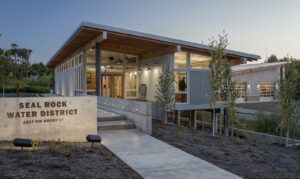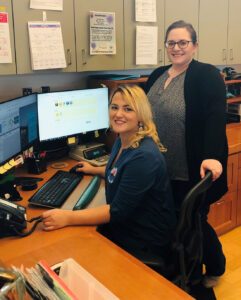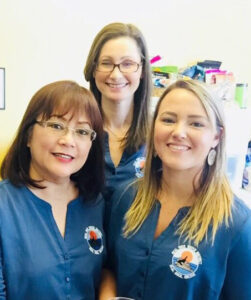Seal Rock Water District (SRWD) provides water to several thousand yearly and seasonal residents of the Oregon coast. With a newly installed smart water grid, it is a technologically advanced district that has sharply reduced water waste and demand. Moreover, SRWD is thinking about the future. As it builds a new water intake to increase its resilience and independence, it is designing it to be resilient to potential earthquakes and tsunamis. In this interview, SRWD General Manager Adam Denlinger tells Municipal Water Leader about his district’s water sources and infrastructure; the usefulness of its intertie with the Newport, Oregon, system; and its plans for the future.
Municipal Water Leader: Please tell us about your background and how you came to be in your current position.
Adam Denlinger: I have a 36-year career working for the water and wastewater departments of municipal governments, serving both large and small communities in Texas, California and Oregon. I studied the principles of water and wastewater management at Sacramento State University, California. I began working for a municipal agency 36 years ago in Tyler, Texas. I spent a number of years there and really enjoyed working to provide essential services. I moved from there to California, where I spent several years working for a few larger cities in their water and wastewater or public works departments. In 2006, I moved to Oregon to manage the public works department of the City of Toledo, a small community in this region. About 7 years ago, I took the role of general manager of SRWD. Over the course of my career, I have been responsible for managing numerous complex government programs and infrastructure projects related to municipal water and wastewater uses. I have served in collaborative roles with multiple agencies to provide beneficial, costsaving outcomes related to joint service agreements and regional municipal improvements. I serve on the board and the legislative committee of the Special Districts Association of Oregon and am a coconvener of the Mid-Coast Water Planning Partnership. I hold state registration in water and wastewater in both Oregon and California.

Water is important to me not just because it’s essential to life, but because I genuinely believe that everyone should have access to clean, reliable, safe drinking water and sanitation. It is a basic human right.
Municipal Water Leader: Please tell us about SRWD.
Adam Denlinger: SRWD is one of the largest municipal water districts on the Oregon coast, although we’re still considered a small community water district. SWRD was formed in 1956 through the merger of some small districts in this region. We serve an area of about 12½ square miles between Waldport and Newport. We maintain 65 miles of piping and about 3 million gallons of stored treated water, and we do a volume of about 95 million gallons a year in water sales. We have 2,595 service connections. We serve a population about 5,500 static residents, and in the summer months, tourism brings the population closer to 8,000. We also support service to fire districts within our boundaries. We maintain the system in operation with nine employees.
Like that of most municipal water providers, our infrastructure was built over the years and installed to different standards, so we have various sizes of pipe. Our largest pipe is 14 inches in diameter, and it goes down to 2 inches in our main line systems. We have several pumping stations and booster pump stations that balance pressure and deliver water to meet demand.
SRWD is one of the most sophisticated water districts or municipal water suppliers that I’ve ever worked for. The technology and programs we use to manage the system include a smart water grid system consisting of a series of fully automated meters that read into a central point here at the office, which allows us to respond more quickly to leaks and has reduced our water loss down to 10 percent, from about 27 percent 12 years ago. The work that our board has approved to correct deficiencies in the system has made the district a more sustainable, resilient operation.
Municipal Water Leader: Do you have any issues with aging infrastructure?

Adam Denlinger: SRWD received its articles of incorporation in 1956, but it was formed through the merger of existing smaller districts, and the materials that are used in our system range from C900 polyvinyl chloride (PVC) pipe to high-density polyethylene (HDPE) pipe, which we’re using because of its flexibility and resilience to earth movement. I believe the oldest pipe in the system is 12- to 14-inch asbestos concrete transmission pipe, which is close to 75 years old. That material is targeted for replacement in our master plan.
Municipal Water Leader: What is the source of your district’s water?
Adam Denlinger: The district currently purchases wholesale water from the City of Toledo. Our source water comes from the Siletz River, where the district has water rights, and is treated through an agreement with the City of Toledo, which then delivers it to the district via an 8-mile, 14-inch transmission line that is vulnerable due to age and soil conditions. The district is currently in the process of developing a primary source of water closer to the district that will give us more local control. Recently, the district advertised a request for bids for the construction of an intake on Beaver Creek, which is in the center of the district’s service area. The project includes constructing an intake, a 1½-mile raw water delivery line, and an advanced membrane treatment facility located outside the tsunami inundation zone. Construction is scheduled to begin in spring 2020.
I should also say that one of the important supports of our system is an emergency intertie with the City of Newport’s system. From time to time, the district and the city share water between our systems, whether because of an emergency or because of scheduled maintenance. This intertie was constructed with a grant from the Federal Emergency Management Agency’s Natural Hazard Mitigation Grant Program and funding provided by Business Oregon’s Infrastructure Finance Authority. Having access to the intertie allows me to sleep a little easier, because we have lost access to our primary source water line on a number of occasions. When this occurs, the district can rely on about 5 days of storage in our reservoirs, but the intertie gives us the luxury of being able to switch to a secondary source if necessary.
Municipal Water Leader: Would you give us an example of a time when it was necessary to take advantage of that?
Adam Denlinger: At one point, a fire hydrant was hit in South Beach, the community just across the Yaquina River from Newport, and it had to shut down its system and isolate the area that was under repair. We were able to open the intertie and provide water to the City of Newport. More recently, we had a fire in a community near the airport where the intertie is located. Several fire trucks connected to our system and were pulling so much water from it that they were reducing pressure both to the local community and to the adjacent community. We were able to open the intertie and balance the pressure so that the firefighters could continue to safely respond to the fire without negatively affecting the water system.
Municipal Water Leader: Please tell us about your earthquake resiliency planning.
Adam Denlinger: I can talk specifically about the planning process we have followed in developing the source water project I discussed a moment ago. Aside from the actual design and construction of the facility, we also put care into choosing a location for the facilities that will make them more likely to survive and recover from an earthquake and subsequent tsunami. We followed the state’s resiliency and recovery plan closely. We used HDPE pipe, which is flexible and can move along with the earth. The project also considers the use of seismic fittings. While more expensive than conventional fittings, they will be able to move and flex as the earth moves. Our treatment plant will be constructed outside the tsunami inundation zone in order to ensure access to that facility even in the case of a tsunami. The million-gallon storage reservoir at the treatment plant will be constructed according to our region’s seismic standards. The system will be fully automated, not only as far as treatment is concerned, but also in its capability to shut down if there’s a power outage. If the earth moves, valves will close to isolate water.
Municipal Water Leader: Please tell us about your communications initiatives.

Rural Development employee Holly Halligan.
Adam Denlinger: We are working to raise awareness of the value of water within our community. I don’t think that we as community water providers have done an effective job of informing our customers about the true cost of water and the effort that we put into delivering water. In fact, I think we’ve done quite the opposite, and we need to change the narrative. As municipal water suppliers across the nation, we have done such a good job of extending the useful life of community water systems that we have inadvertently created a culture of complacency in which water is taken for granted. The customer turns on the tap and expects water to be there. We certainly want that to be the case, but we also need to educate our community on the true financial costs of treating that water as well as the effects on the environment. Here on the Central Oregon coast, we have experienced drought conditions every year for the last 3 years. The last 2 years, we’ve had to issue water curtailment notices to our communities. The district, along with several neighboring municipal water suppliers, participates in a regionwide water conservation consortium to educate our community about the need to conserve water, not just so that it’s available for domestic use, but to ensure that it is is used responsibly and remains available in the stream.

One important issue that SRWD and our board of commissioners have placed high on the priority list is the implementation of our state-approved water management and conservation plan (WMCP). Benchmarking identified in the WMCP included taking steps to reduce unaccounted-for water loss in the system. To improve customer response time with daily and hourly consumption monitoring, the district decided to upgrade to an advanced metering infrastructure (AMI) system, also known as a smart water grid system, using funding provided by the U.S. Department of Agriculture’s Rural Development Waste Disposal Loan and Grant Program. The grant offers support for clean and reliable drinking water initiatives in rural areas.
Since the installation of the district’s smart water grid system, district staff has worked hard to engage our community in developing profiles that allow individual customers to monitor their own water use. Through a partnership with our customers, we’ve reduced our water loss from 27 percent to 10 percent. More importantly, we have reduced our demand on our source water by 25 percent. We’re using 25 percent less water today than we were 5 years ago, despite growing 7 percent in the same time period. We’re seeing tremendous benefits and results from using technology to help us manage our system. Proper water management is necessary in order to gain control of the little water we do have.
Innovative system technology is one cost-effective solution for municipal water suppliers. Protecting the environment is everyone’s responsibility and is something the SRWD board of commissioners takes seriously. Water is a precious resource, and using new, innovative technology like AMI allows water provides like us to ensure this precious resource remains sustainable and available for future generations.
Adam Denlinger is the general manager of Seal Rock Water District. He can be contacted at adenlinger@srwd.org or (541) 563-3529. For more information about SRWD, visit www.srwd.org.
